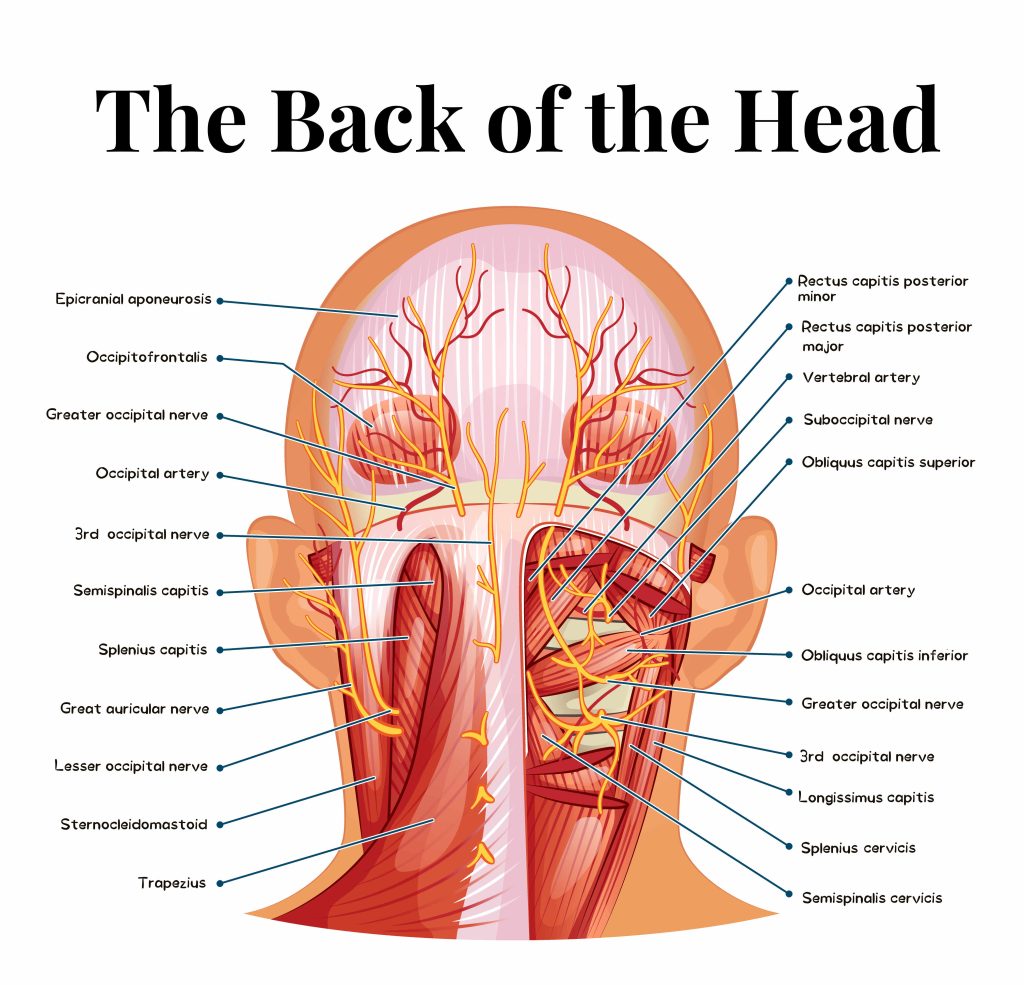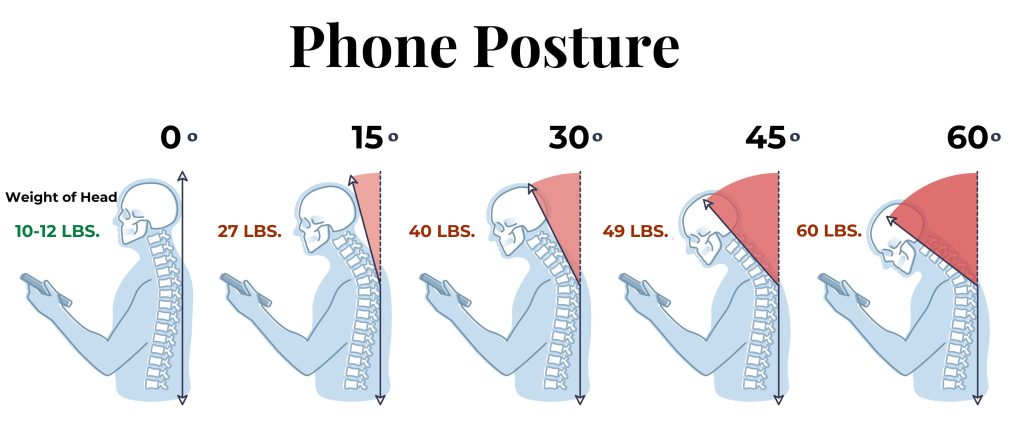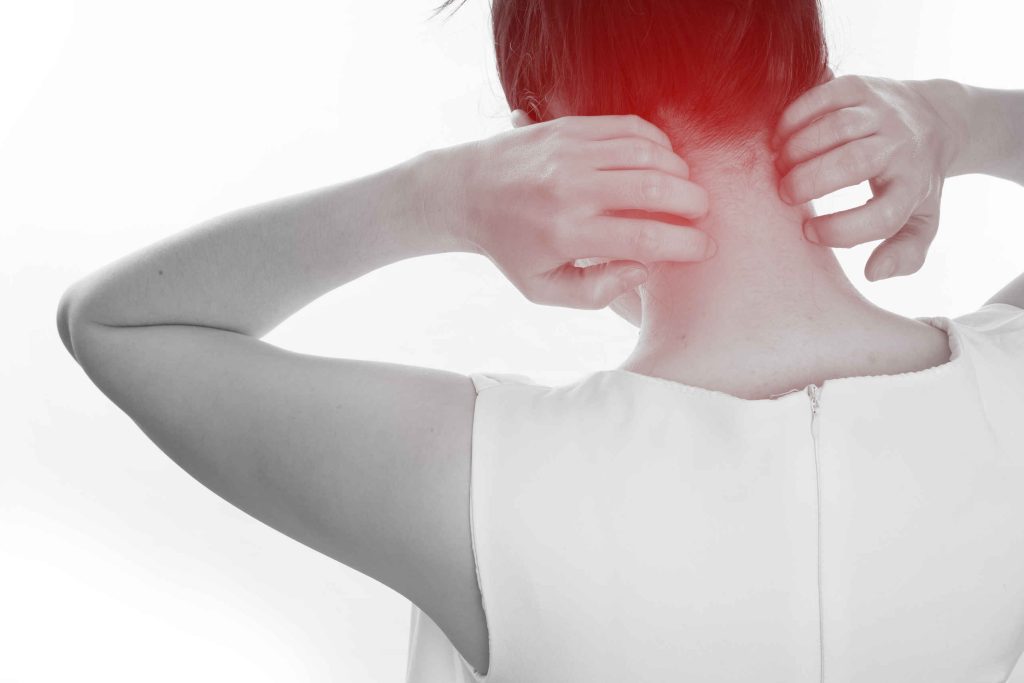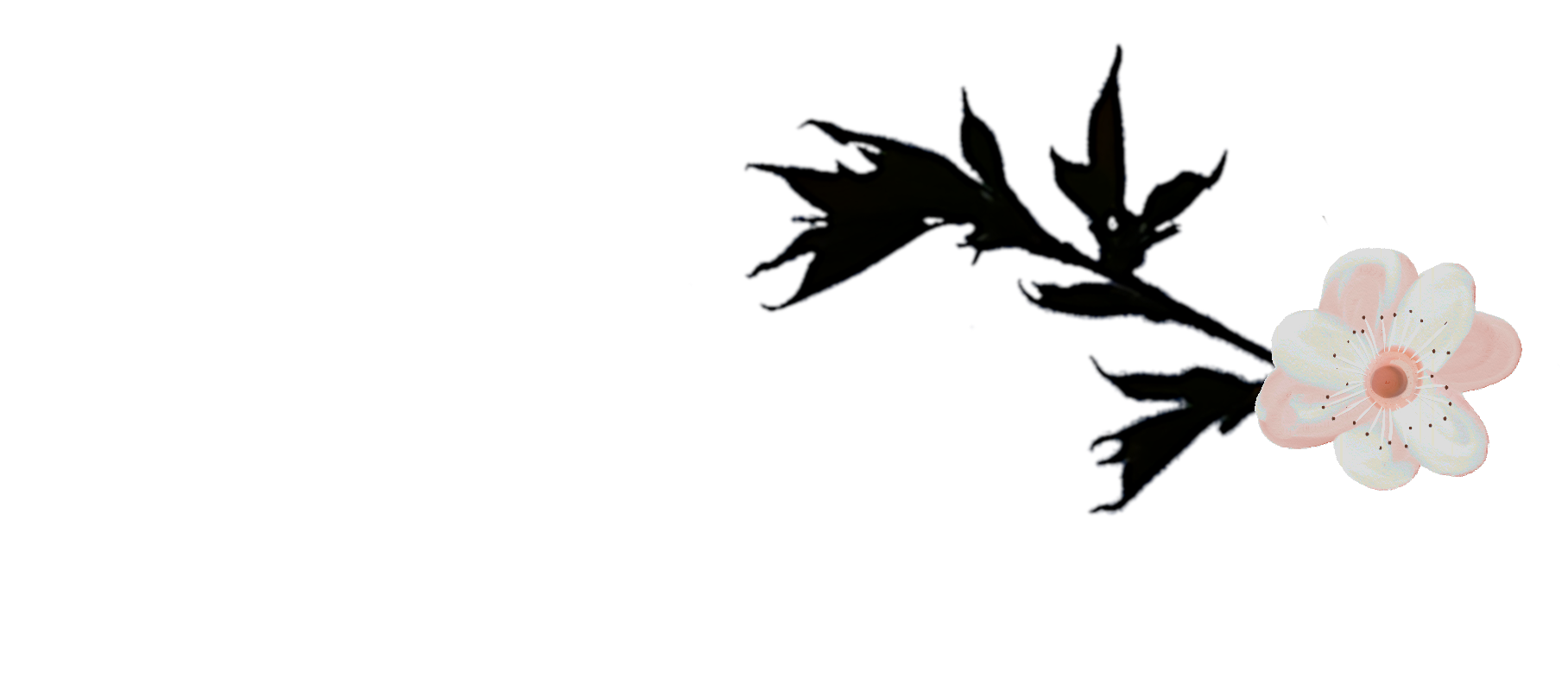How I Found Relief from Occipital Neuralgia
This post may contain affiliate links, which means I'll receive a small commission if you purchase through my links, at no extra cost to you. Please read full disclosure for more information. Your support is appreciated!.
The information in this post is not medical advice. The content on this blog is for informational purposes only, and is not intended to be a substitute for professional medical advice, diagnosis, or treatment. Please contact your physician or other qualified health provider with any questions you may have regarding a medical condition.
What is Occipital Neuralgia?
Occipital Neuralgia refers to a painful headache-like condition in the occipital region of back of the head. These occipital headaches can be on the right or the left side, but can also be on both.
For me, I began having an intense migraine headaches on the right side of the back of my head. This pain was most intense behind the right ear, where the skull and spine meet.
Occipital Neuralgia pain comes from the occipital nerves, running from the top vertebrae of the cervical spine up along the scalp. These nerves can be pinched, injured, inflamed, or damaged. Sometimes this pain can come from an injury or accident such as whiplash, with symptoms showing up even years later.

Cervicogenic headaches usually begin with an injury to the neck and have similar symptoms to occipital neuralgia, since pain radiates from the neck upwards.
Occipital Neuralgia is also called “text neck” because of the head position people often take while texting on their phone. Repeated hunching the head can cause stress, pressure, and injury to the neck, because of the heaviness of the head. This also injures the nerves, causing migraine-like pain.
As you can see in the photo below, the more we bend our neck to look at our phone, the more weight we force on the neck.

Unfortunately, I read in many places that regular family doctors could not offer many treatment options for occipital neuralgia. (Among the few treatments mentioned were strong painkillers, nerve block injections, and surgery to cut the nerves and numb the head). I read stories of great discouragement for those with occipital neuralgia, because the only options offered to them by traditional medicine had not worked.
If this has been your experience, I encourage you not to lose hope.
My Experience
At first I did not know what was wrong with my head. One night I woke up with a headache on the right side. First, I thought I was having a severe migraine and ended up vomiting. I could not concentrate or listen to music or any kind of show or podcast, all I could do was wait for the pain to subside, usually at daybreak. This happened every night afterward (the vomiting and all).
It took me about a week before I realized the pain was actually coming from my neck and not my head. I remembered waking up with my neck in a very awkward and painful position a few nights earlier. Whatever the cause, I began having extreme pain in the back of my head which radiated to my forehead.

In all honesty, ibuprofen and Tylenol did not touch this pain or help at all.
I believe and have seen first hand, the miraculous healing power of God, even having been healed in my own body before. Therefore, this injury threw me for a loop. I said to God, “If You don’t heal me, I won’t get healed. I need Your help!”
Within two weeks the Lord put me in contact (over the phone no less!) with complete strangers who told me about a cervical spine doctor within 40 minutes from my home (they did not know me or where I lived!). This was nothing short of God’s intervention. The doctor is also a Christian and he knew exactly what was wrong and approximately how long it would take to heal.
Healing did not happen immediately. The Bible says that healing is the children’s bread (Mark 7:27). However, I knew I had caused this injury to my neck by over-extending myself during a sewing project. Therefore, it was necessary for me to learn to take better care of myself and then I could receive my healing and it would last.
What Worked for Me
Neck Brace and Sleeping Sitting Up
Before I found a doctor, I bought a neck brace. Wearing this took most pain out, but I was told I should not use it long term, and only for about an hour at a time. As soon as I removed it, the pain returned.
I also began to layer pillows and sleep while sitting up in bed. Although this brought some relief from the headaches, the bones in my neck were still misaligned. This did help however, until I was able to find a good doctor.
Upper Cervical Spine Doctor (Chiropractor)
Because traditional doctors could only suggest medication or surgery, an upper cervical spine doctor (chiropractor) who understood the nerves and bones in the upper spine offered me much more benefit.
My upper cervical spine chiropractor suffered with the same issues of occipital neuralgia as a college student, and his experience led him to help others. He focused on the top two bones in the spine. When these two bones are in alignment, the rest of the bones of the spine go into place as well.
I started out going to him twice per week for a couple of months. Then I went once a week, to once per month, and now it is simply as needed.
Upper cervical spine doctors differ greatly from traditional chiropractors. You may have gone to a traditional chiropractor and failed to find relief. Traditional chiropractors generally cannot target the top two bones. The nice thing about my upper cervical spine chiropractor was that he did not do any forceful cracking, he only used two fingers to realign the bones.
Keep in mind these specialty cervical spine chiropractors may go by different titles. If you want to find one in your area, look for a chiropractor who focuses on the uppermost bones in the spine (these bones are the Atlas or C1 and Axis or C2 vertebrae). These doctors can target where the nerve pain is coming from (usually misalignment and a compression on the nerves). The Upper Cervical Care website has a directory of doctors.
By the way, my atlas and axis were very close together, causing the nerves to be squeezed into a very narrow opening, thereby injuring and inflaming the nerves.
When in between appointments with the chiropractor, I used a neck hammock. This provided a lot of pain relief as well, and I could feel my neck relaxing. It feels as thought the head is resting or floating on the top of water, releasing the tension between the vertebrae.
After talking with my chiropractor, I realized some of the worst pain was not only due to nerve injury but also ligament and tendon damage. I bought some collagen to put in my morning coffee. Collagen helps ligaments and connective tissues to heal and become stronger. When the ligaments and tendons are strong, they can help hold the neck bones in place, thereby taking the stress from the occipital nerves.
Some people do have some digestive issues with collagen so it may be wise to start with a smaller amount.
Collagen can also be bought in capsule form.
Here is a list of other nutrients beneficial to ligaments.
I was told to take Methylcobalamin as opposed to other types of synthetic vitamin B12. B12 is very important for the myelin sheath around nerves, and can help to heal nerves.
Here is another article about trigeminal neuralgia (similar to occipital neuralgia) and repairing the myelin sheath of nerve cells.
I began taking a good vitamin supplement, just to replenish nutrients that may have been lacking.
This supplement is good even if you don’t have terrible neck pain. Glucosamine supports joints and ligaments and helps with arthritis and inflammation. My friend was told her dog would need to have surgery due to an injured ACL, but putting her on glucosamine completely healed her.
This memory foam bed cover was extremely helpful in healing not only my neck but my sore back.
I bought an inverter table before finding a doctor, but only when I hung totally upside down did I have relief with the C1 and C2, which is a bit hard on the rest of my body. You can try a slighter incline if you have trouble with being totally upside down. Inversion releases the vertebrae so that they can come back into alignment properly.
What Has Worked For Others
Some people said a neck stretcher helped them. It is supposed to bring relief by stretching and separating the neck vertebrae. Honestly, I bought one but hardly used it. You could certainly give it a try.
Red light can heal the ligaments in the neck, and stimulate collagen production, but it would be beneficial to get the neck into alignment beforehand. To heal correctly, the bones and ligaments should be in the right place.
Some people said that magnesium took all the pain out from their occipital neuralgia. I bought some magnesium but I was inconsistent with taking it, but it may benefit you.
Here is an article explaining the use of magnesium to treat occipital neuralgia.
Someone suggested L-theanine, used for the calming effect, can help with tension in the muscles (in a similar way as magnesium).
This is a supplement that is used to treat nerve problems and inflammation.
Homeopathic Medicines
See the following two articles are about trigeminal neuralgia, which is similar to occipital neuralgia and more information about nerve medications that can target the right or left sides:
https://www.drhomeo.com/neuralgias/homeopathic-remedies-for-trigeminal-neuralgia-treatment/
https://www.drwolfe.com/my-dentistry/homeopathic-remedies/
A topical oil, many people have had relief from pain through applying this oil.
Studies have shown this supplement to be effective in relieving nerve pain and promoting nerve regeneration.
Prolotherapy is an injection treatment that targets pain and helps the regeneration of damaged muscles, tendons, and connective tissues. This may be of help for those who have had a traumatic injury to the neck, and there is instability in the neck as a result. Here is a site with doctors who offer prolotherapy.
Cervical Pillow
Here are some pillows I have not yet tried, but came recommended for neck pain:
Ergonomic Adjustable Cervical Pillow by Nature’s Guest
Adjustable Cervical Memory Foam Pillow
Anvo Cervical Memory Foam Pillow
Here are some memory foam pillows, said to be great for the neck:
Supportive Compressible Pillow
Wedge Pillow
I did not buy myself a wedge pillow, because I was able to use the pillows I already had. However, I did consider an inflatable one like the following, for travel. (Sleeping while sitting really saved my occipital nerves from the pressure of my skull while laying flat on my back).
Pillow with a Slight Incline: Inflatable Wedge Pillow
Pillow for sitting straight up: Inflatable Wedge Bed Pillow
Comfort Axis Inflatable and Portable Bed Wedge Pillow with Velour Surface, Blue
